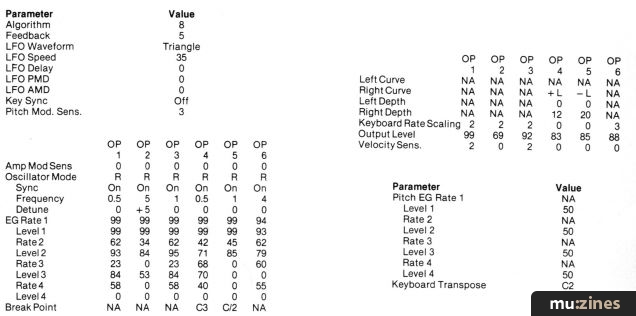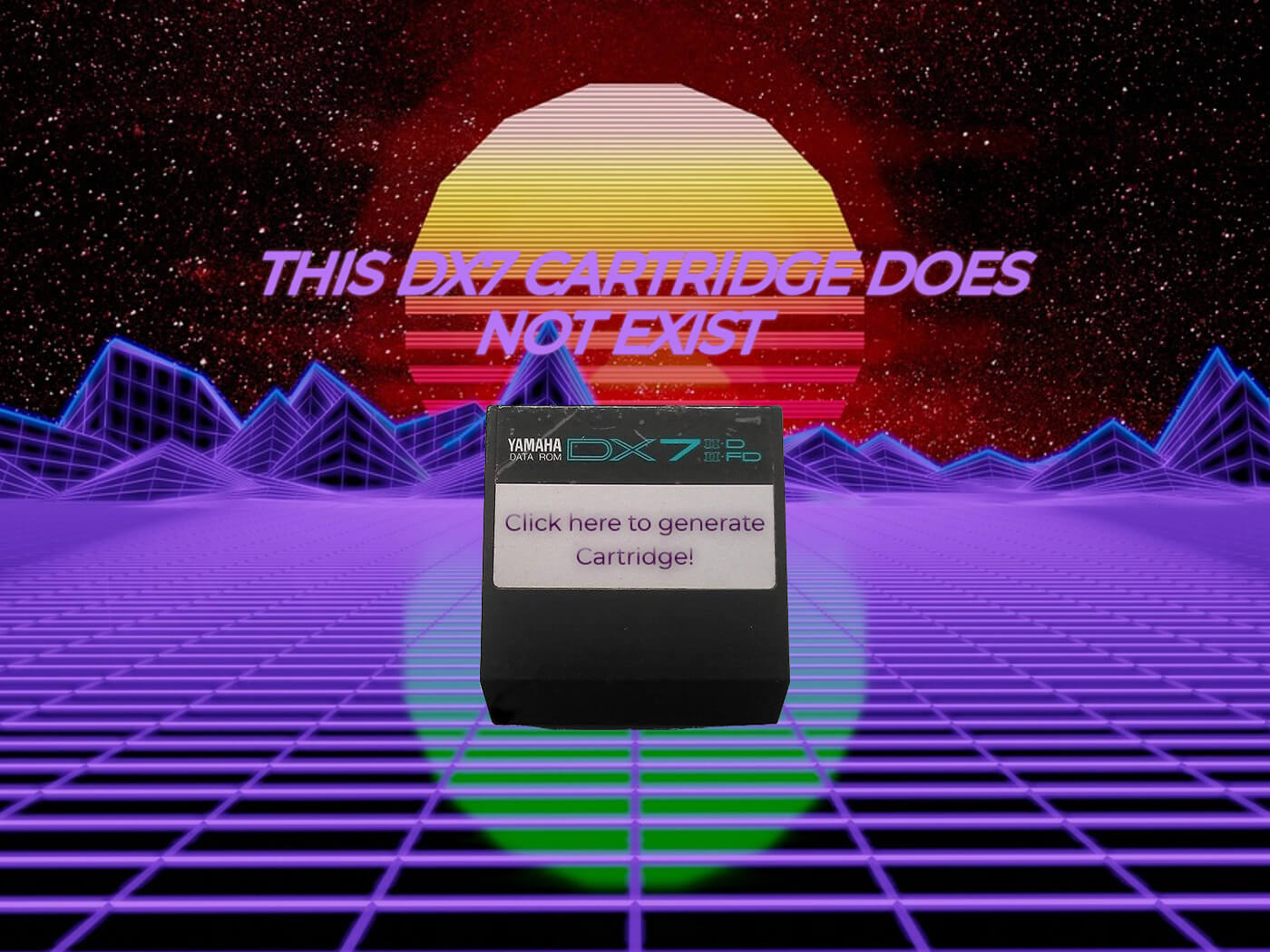
A selection of patches for the DX7 synthesizer. Contribute to jphaenlin/DX7-patches development by creating an account on GitHub. Bank 1 is electric piano and bell sounds (the DX7's calling card). Bank 2 is plucks, basses, and brass. Bank 3 is strings, pads, and everything else that didn't fit any of the other categories. Some of the patch names have been modified somewhat to better match the ones around them. Wayback Machine Link for Patches, Folkshttps://web.archive.org/web/3400/http://johngilbertscientist.com/dx7sysex.ziphttps://deadzonesynth.blogspot. Patch King DX7 Sounds are your best upgrade value. Sounds are compatible with the DX7 Series, TX7, TF1 and Native Instruments FM7 and FM8 software synths. Available as System Exclusive or Standard Midi Files. Download via our free e-mail delivery and get your new DX7 patches today! Import Dx7 Patches Into Fm8; Ted's Yamaha DX7 Page Ted's Yamaha DX7 Page Ted Felix I finally got myself a DX7. The story begins for me back in High School in 1985. The keyboardist in a band I was in had a DX7 and left it at my house for a weekend along with the manual. I started programming it and was hooked. Haven't touched one since then.
Released by Yamaha in 1983, the DX7 is another one of those landmark synthesizers in the history of electronic instruments. Until the DX7 burst on the music scene, most synthesizers were all analog based. The DX was the first commercially successful digital synths. And boy was it every successful! Every keyboard player from guys playing in their garage to the biggest names in the music business bought one and before it was discontinued in the late 80's, the DX became one of the biggest selling synths of all time.
Dx7 Patches For Dexed
Of course, besides the affordable price, what made it so popular were the sounds that you could produce on one. It's digital FM synthesis was able to create a wide range of new sounds that you just were not able to produce on a analog synth. The DX is widely known for it's great rhodes electric pianos, bells, killer synth basses (the 'lately bass' being especially popular) and metalic type synth sounds.
The original DX7 was also one of the first synthesizers to have MIDI (musical instrument digital interface) included. It was released the same year as the MIDI spec and as a result has incomplete support for the standard: It only transmits information on MIDI channel 1, has no OMNI support for sending and receiving on all midi channels and will not send velocity data beyond value 100. Yamaha fixed all the midi problems and continued to make improvements with the updated DX7-II models that were released throughout the 80's. These included the DX7-IID, DX7-S and DX7-IIFD, which included a built in floppy drive and the TX802 which was a DX7-II in a rack with 8 outputs. The TX816 had eight DX7s in a rack mount, with individual MIDI ports and balanced outputs for each module.
In 1988, in celebration of the company's 100-year anniversary, Yamaha released the DX7 II Centennial. It was a DX7 II FD with a silver case, gold painted buttons and sliders, and 76 glow-in-the-dark keys. Only 100 were made and were priced at US$3995. Definitely a sort after collectors item for synth junkies. Finally, nearly twenty years after it's release Native Instruments released FM7, which is a software version of the DX. This IMO is one of the few software synths which actually sounds as good if not better then the original and well worth picking up if your interested in FM synthesis and the type of sounds that can be created with it.
Sound Source Unlimited Dx7 Patches


Sysex Dx7 Patches
The DX7 II Centennial and TX816 Rack
Dx7 Patches

Original Dx7 Patches
Being that the DX had no sliders, switches and knobs like a typical analog synthesizer, it was very difficult to program. FM synthesis was also a much different concept in creating sound using sound operators, modulators and carriers which also made it difficult to work with. Fortunately, several programmers (including us) took the time to learn how to create sounds in this new format and a wide range of sounds soon became available for the DX. Several talented programmers also released computer editors and librarians for the DX which let you program new sounds using your computer. These were popular with computer systems like the Commodore-64 and Atari which were the mainstream computers at the time for running music applications. The company 'Grey Matter Response' also released the 'E' expansion board, which boosted the DX's memory and added a sequencer.
Shortly after the DX was released, we bought one and started to learn how to program sounds for this amazing new synth. Throughout the 80's we owned pretty much every type of DX7 that was released and slowly assembled a large library of DX7 sounds. Our collection now has over 1000 programs included and is compatible with all the DX7 models. The sounds are available in system exclusive (.syx) or standard midi files (.mid) and can be downloaded from our web site when you order our free e-mail delivery. We provide the software with your order that lets you load in the sounds. All you need is a midi interface to be able to connect your computer to the DX. We also have a collection available in DX7-2FD format that we can send you on a floppy disk that you can load directly from the DX's floppy drive if you not set up to load in sounds via midi. Note: The DX7-2FD floppy disk library is set up differently and contains 18 banks of patches. Sorry, but the sounds are not available on the old DX7 cartridges.